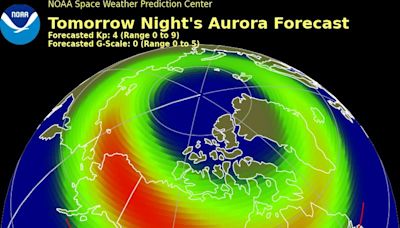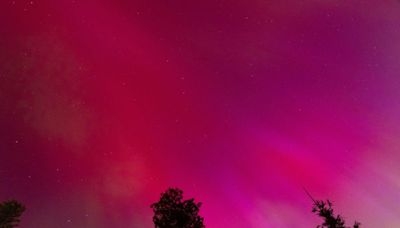Search results
Feb 9, 2024 · "The northern lights are happening 24 hours a day, seven days a week, 365 days a year," said photographer Chad Blakely, owner of the northern lights tour company Lights Over Lapland. But that ...
This is a prediction of the intensity and location of the aurora borealis tonight and tomorrow night over North America. It also shows a 'viewline' that represents the southern-most locations from which you may see the aurora on the northern horizon.This product is based on the OVATION model and uses the maximum forecast geomagnetic activity (Kp) between 6pm and 6am US Central Time.
Jan 19, 2024 · The 13-day "In Search of the Northern Lights" cruise itinerary with Viking departs from London for the North Sea with stops in ports of call that are top aurora-viewing locales, including Tromsø ...
Aurora australis seen from the ISS, 2017. An aurora (pl. aurorae or auroras), also commonly known as the northern lights (aurora borealis) or southern lights (aurora australis), is a natural light display in Earth's sky, predominantly seen in high-latitude regions (around the Arctic and Antarctic).
Jun 10, 2021 · The northern lights (aurora borealis) illuminate the sky over Reinfjorden in Reine, on Lofoten Islands in the Arctic Circle in 2017. Jonathan Nackstrand/AFP via Getty Images hide caption
1 day ago · What is the aurora? The aurora is a luminous glow seen around the magnetic poles of the northern and southern hemispheres. The light is caused by collisions between electrically charged particles streaming out from the sun in the solar wind that enter Earth’s atmosphere and collide with molecules and atoms of gas, primarily oxygen and nitrogen.
The Aurora Borealis (Northern Lights) and Aurora Australis (Southern Lights) are the result of electrons colliding with the upper reaches of Earth’s atmosphere. (Protons cause faint and diffuse aurora, usually not easily visible to the human eye.) The electrons are energized through acceleration processes in the downwind tail (night side) of ...



